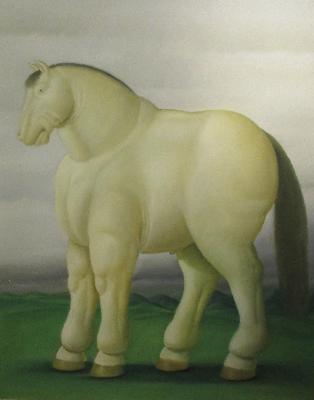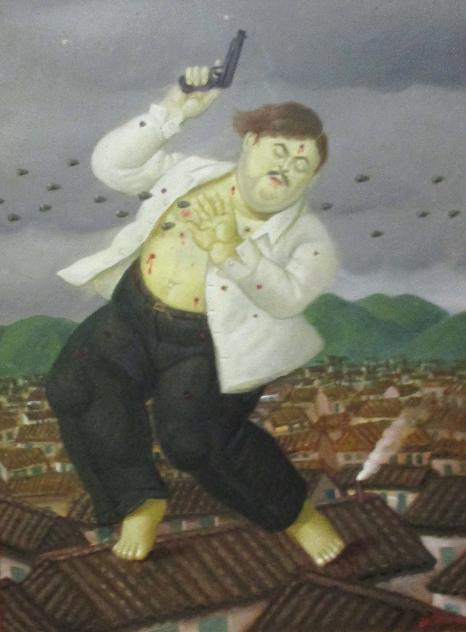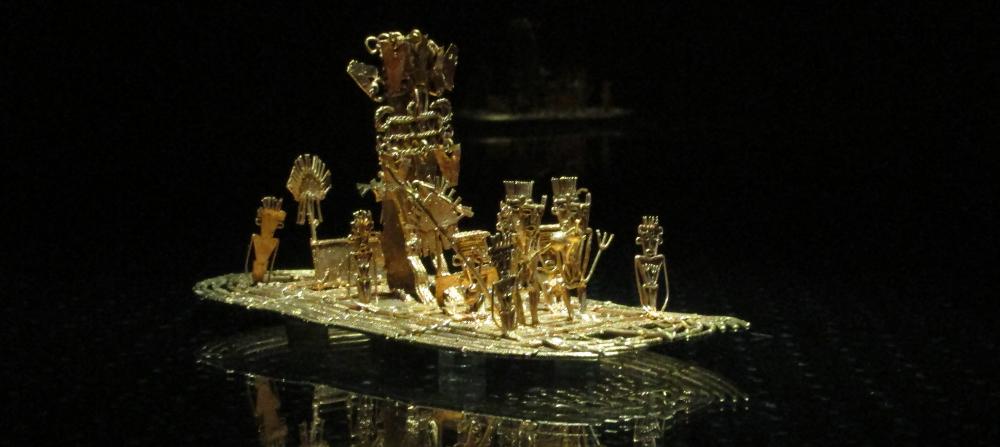

Where We Be
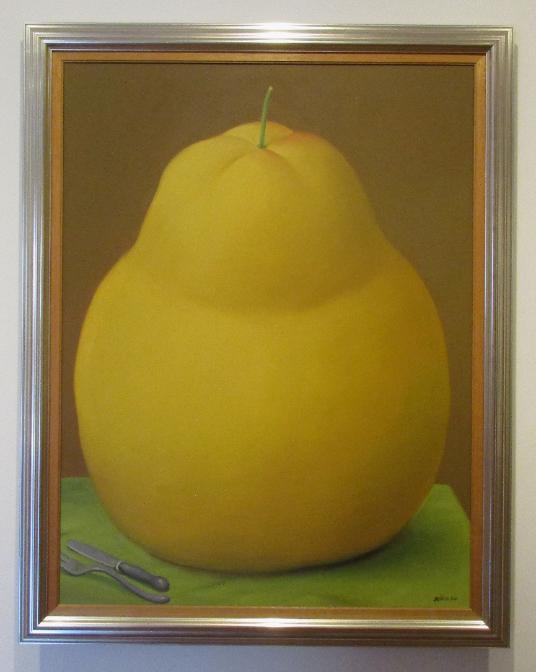
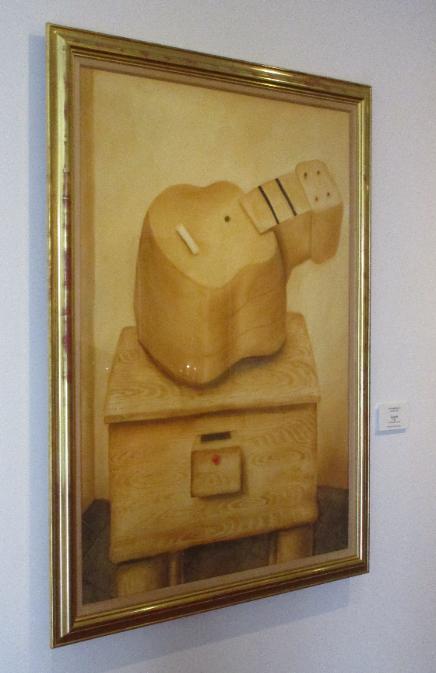
| Like so much of the art on display here, this ear pendant shows a love of geometric design |
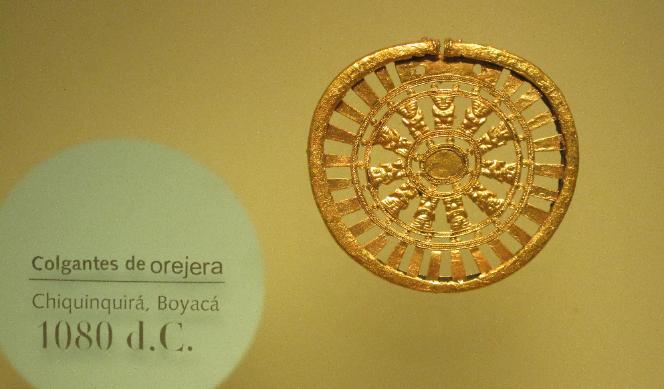
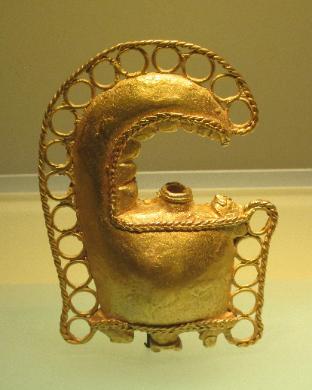
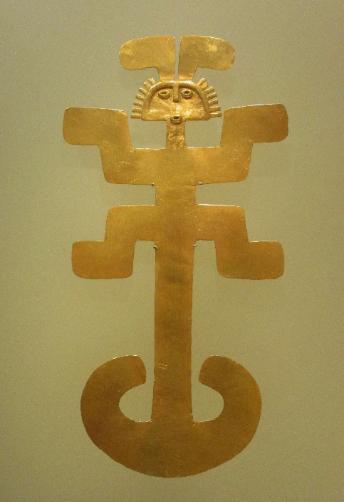
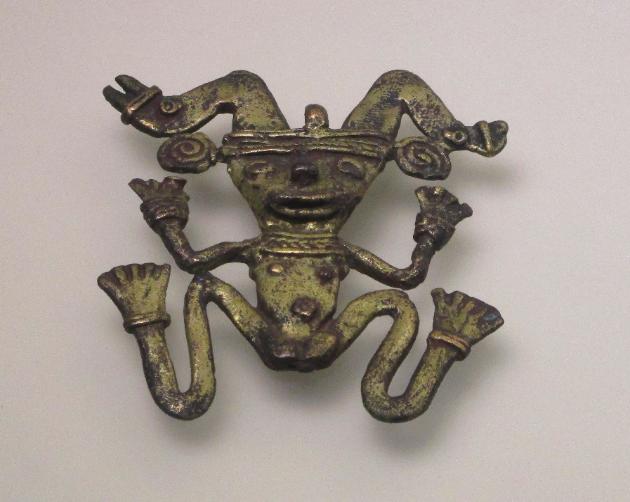
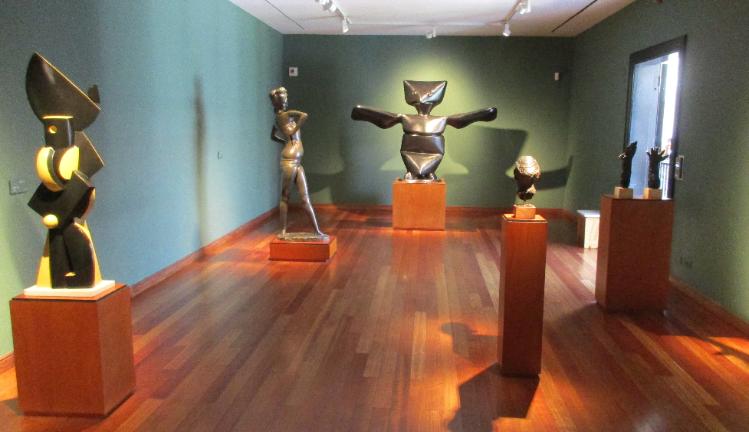
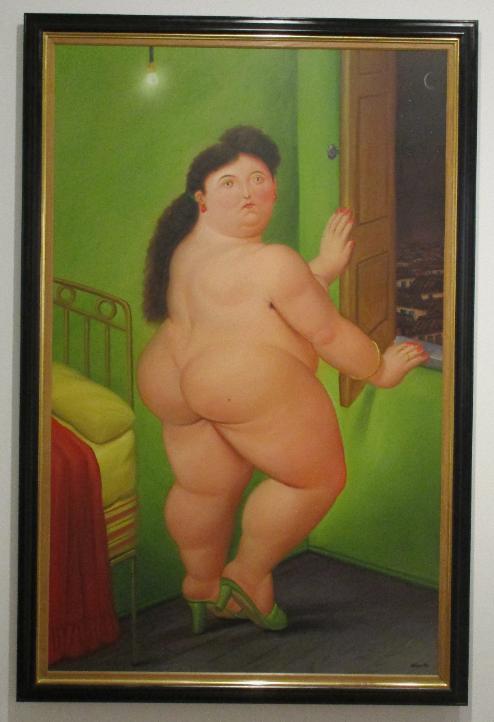
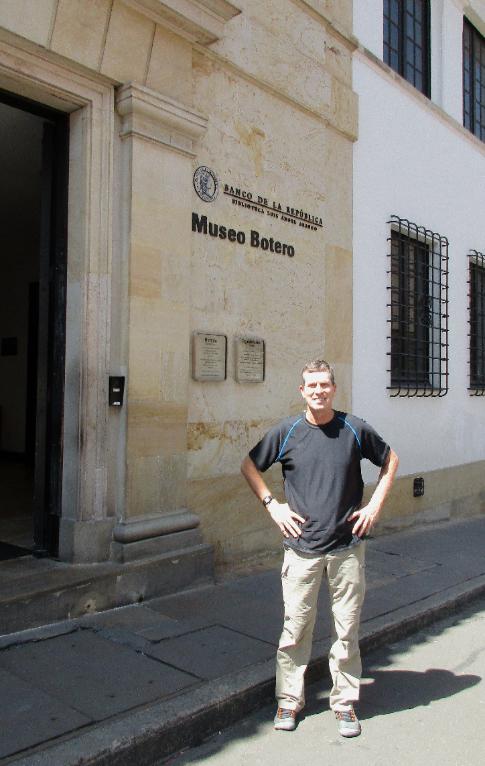
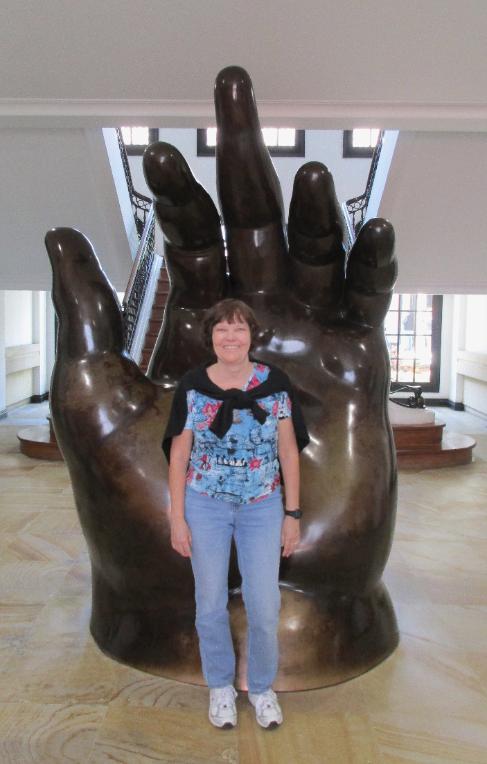
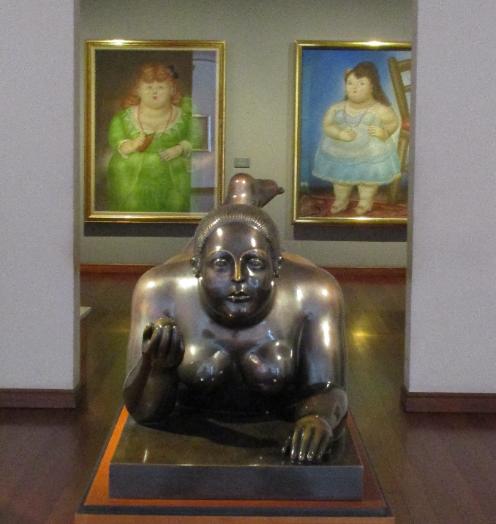
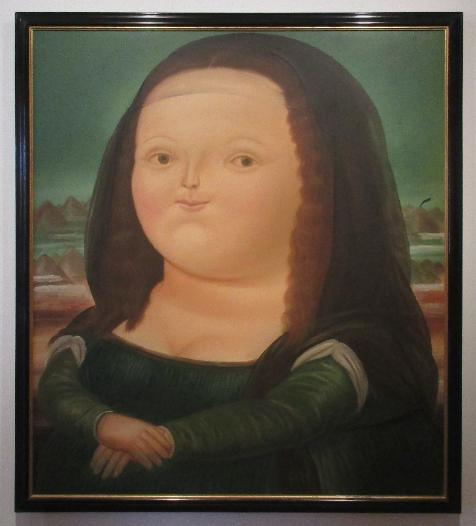
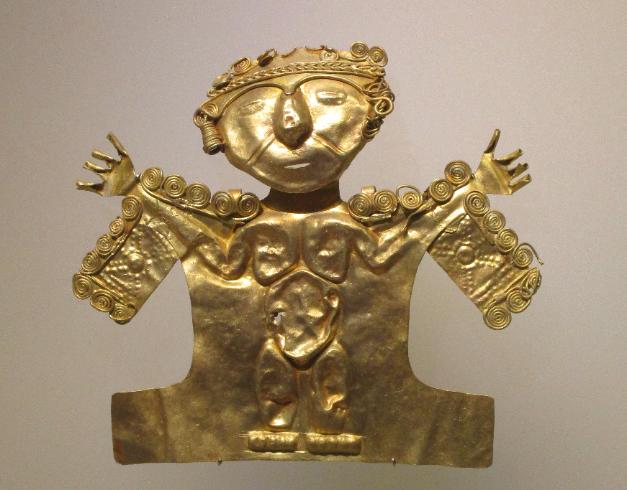
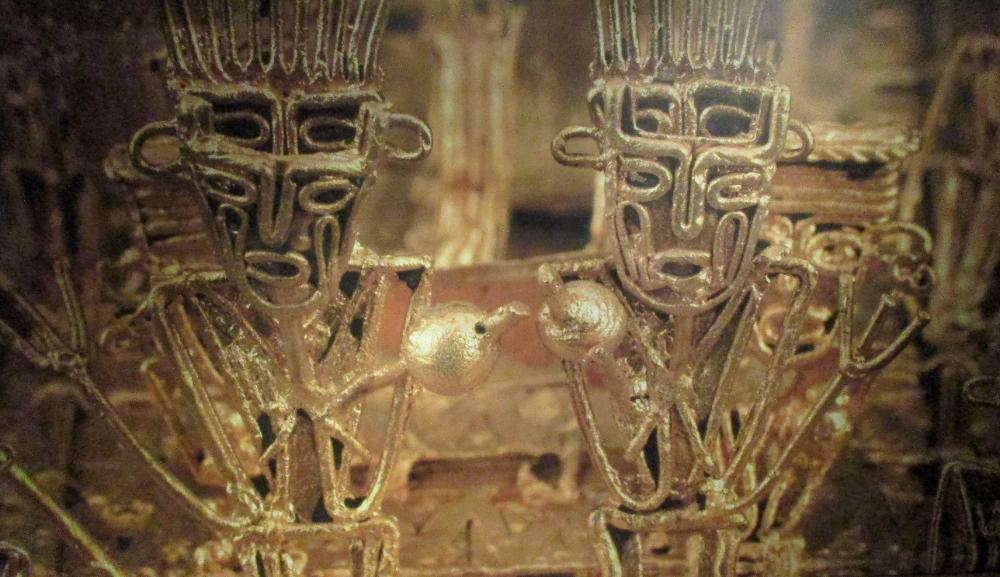
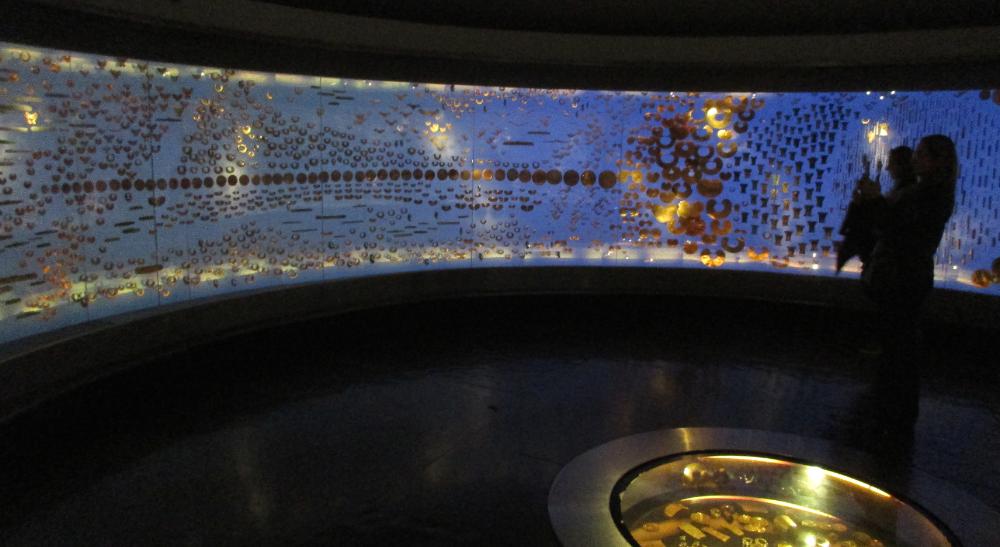
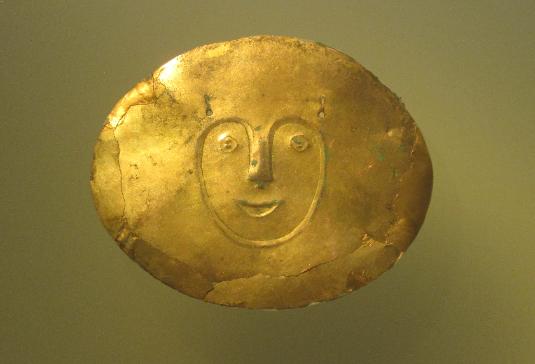
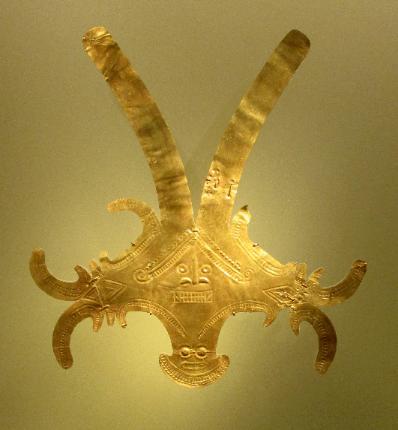
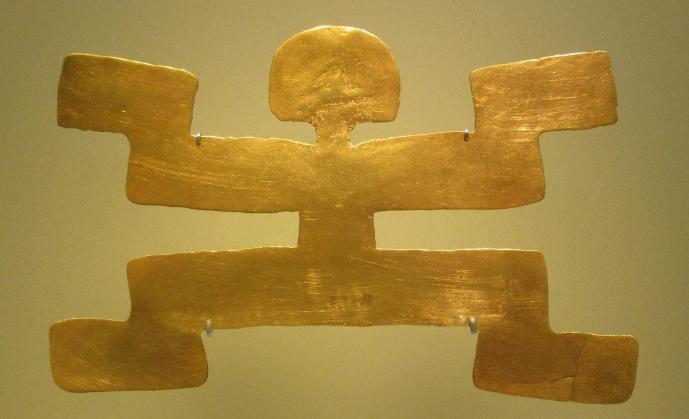
| Just one of the more than 55,000 gold artifacts on display at the magnificent Gold Museum |
| Gold & Botero Museums -- Bogota |
Bogota's Gold Museum, or Museo del Oro, has
the biggest display of gold artifacts in the world
with more than 55,000 pieces of gold. Did you
know that the legend of El Dorado got its start
right here in Colombia? That's right -- at Lake
Guatavita, just a two-hour drive northeast of
Bogota. El Dorado means "the Golden One,"
which is how the Spaniards described the tribal
chief of the Muisca people who, as an initiation
rite, covered himself with gold dust and tossed
gold treasures into the lake as an offering to
the gods before submerging himself in the lake
as well. Over time the legend of El Dorado grew
from a chief to a city to a kingdom to an empire.
Thus it makes perfect sense that Bogota's gold
museum should house an El Dorado's worth of
amazing gold treasures -- including the famous
"Balsa de Muisca," an intricate gold depiction
of the raft used in the El Dorado ceremony.
Meanwhile, at the nearby (and free!) Botero
Museum, you'll get to know Colombia's most
famous artist, Fernando Botero. He's known for
his depictions of people, animals, and objects
with, shall we say, pudgy features. His instantly
recognizable style has become known world-
wide as “Boterismo.” About half the museum is
devoted to his paintings and sculptures and
the other half to artists from around the world.
the biggest display of gold artifacts in the world
with more than 55,000 pieces of gold. Did you
know that the legend of El Dorado got its start
right here in Colombia? That's right -- at Lake
Guatavita, just a two-hour drive northeast of
Bogota. El Dorado means "the Golden One,"
which is how the Spaniards described the tribal
chief of the Muisca people who, as an initiation
rite, covered himself with gold dust and tossed
gold treasures into the lake as an offering to
the gods before submerging himself in the lake
as well. Over time the legend of El Dorado grew
from a chief to a city to a kingdom to an empire.
Thus it makes perfect sense that Bogota's gold
museum should house an El Dorado's worth of
amazing gold treasures -- including the famous
"Balsa de Muisca," an intricate gold depiction
of the raft used in the El Dorado ceremony.
Meanwhile, at the nearby (and free!) Botero
Museum, you'll get to know Colombia's most
famous artist, Fernando Botero. He's known for
his depictions of people, animals, and objects
with, shall we say, pudgy features. His instantly
recognizable style has become known world-
wide as “Boterismo.” About half the museum is
devoted to his paintings and sculptures and
the other half to artists from around the world.
| Both museums are right in the heart of La Candelaria so they're easy to visit |
| The rooms are well-laid-out so you don't feel overwhelmed. A visit here can take as little as an hour if your time is short. |
| This is art that doesn't take itself too seriously -- so just go and have a good time |
| The other half of the Botero Museum contains works of art from masters around the world. To the left is a Renoir painting and to the right a Dali sculpture. |
| Even his guitars and pears are chubby! |
| His exaggerated style has become known worldwide -- we've seen Botero sculptures in many cities around the world |
| Chubby animals are among his most popular works |
| He has painted a surprising number of portraits -- from a first lady (left) to slain drug lord Pablo Escobar (right) |
| No subject is off-limits to Botero -- from stern mother superior to mistress in green shoes and not much else |
| Here's one of our favorites: a pudgy Mona Lisa as she has never been envisioned before |
| Welcome to the Botero Museum, which is both free and fun to visit. Botero himself kindly donated many of the works to this museum. |
| We'd recommend you make the Museo del Oro your top priority in Bogota -- it's that good |
| The cost for all this fun was just 4,000 pesos each (~$1.20). We paid an extra 8,000 pesos for an audio guide (~$2.50) but didn't really need it since the descriptions were so good. |
| This lobster claw artifact shows how the artists incorporated nature's designs into their own |
| Expressions ranged from ridiculously happy to frighteningly sad! Clearly these ancient artists wanted to capture the full range of human emotions. |
| We spent three hours here before museum fatigue set in. There's a lot to see so give yourself plenty of time and take a few rests along the way. |
| We especially liked this room which started out pitch-black then slowly lit up in different spots to reveal huge amounts of gold treasure. It aptly captured the feel of El Dorado at Lake Guatavita. |
| So many creative and varying expressions of culture -- animal-human amalgams, geometric designs, ritual offerings |
| The museum has wings devoted to the many different pre-Colombian cultures that created distinctive art in gold and other mediums |
| In terms of quality this museum reminded us of the Luxor Museum in Egypt, with each piece lovingly displayed |
| This top-notch museum has two floors chock-full of amazing gold pieces. Each piece is labeled with short descriptions in Spanish and English. |
| Closeup of two of the figures on the raft. The range of dates for the piece's creation is quite broad -- between 600 and 1600 AD. |
| This is the famous "Balsa de Muisca," or Muisca Raft, on display at the Gold Museum. So intricate! It depicts El Dorado with his retinue out on a raft in the middle of Lake Guatavita. |
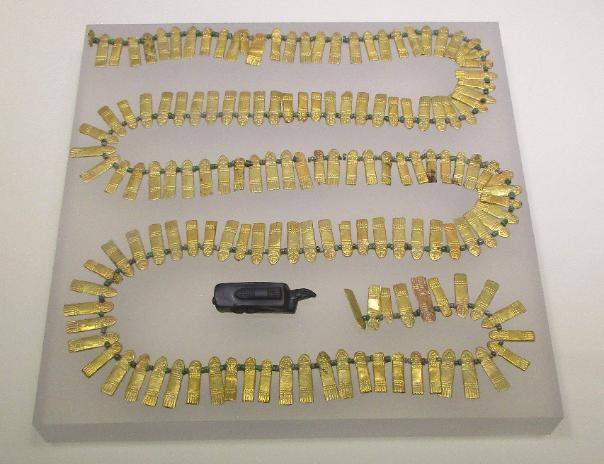
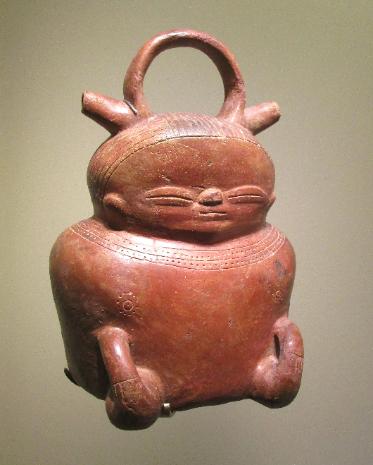
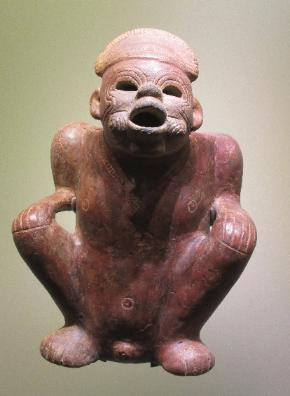
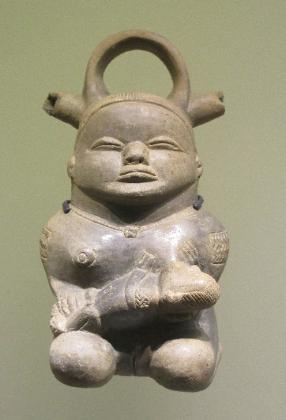
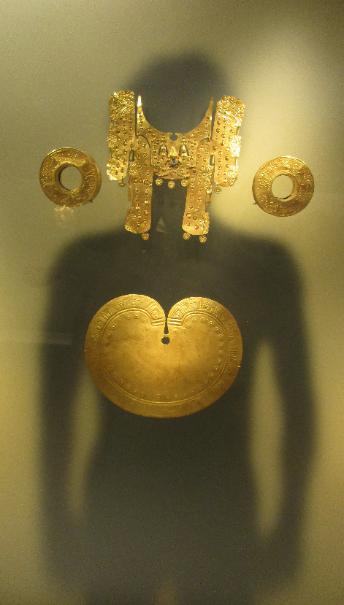
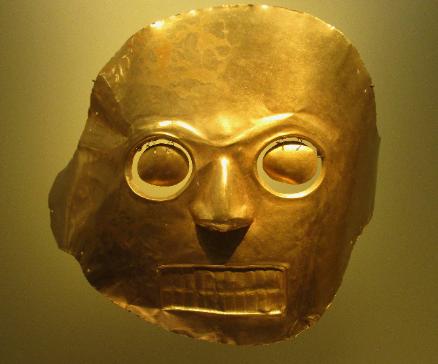
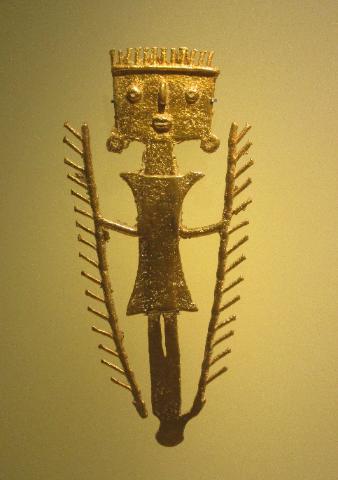
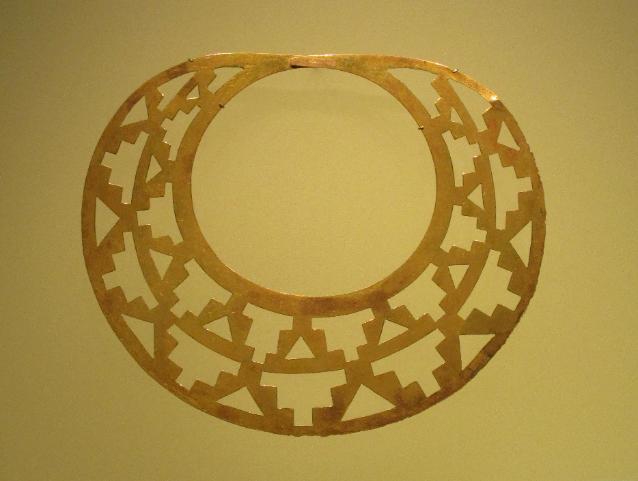
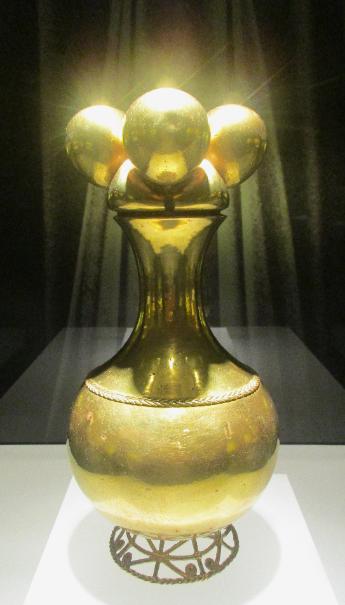
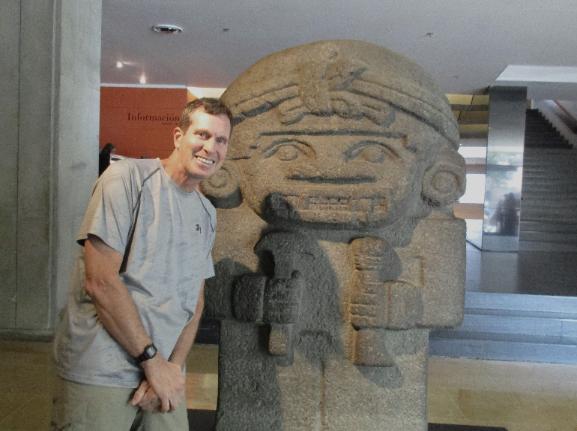
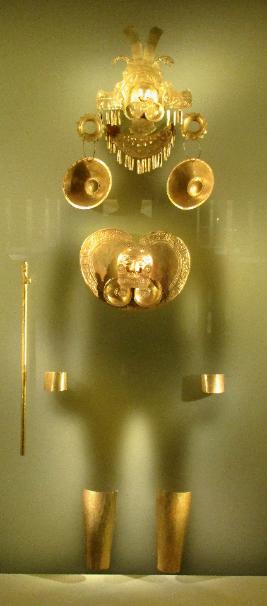
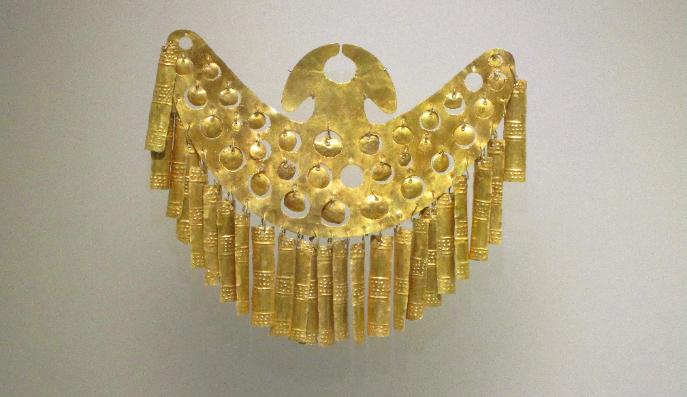
| Gold Museum |
| Botero Museum |
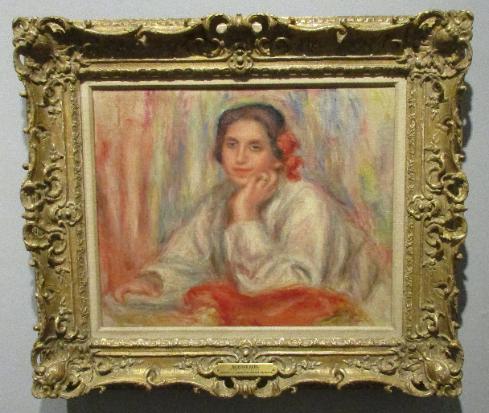
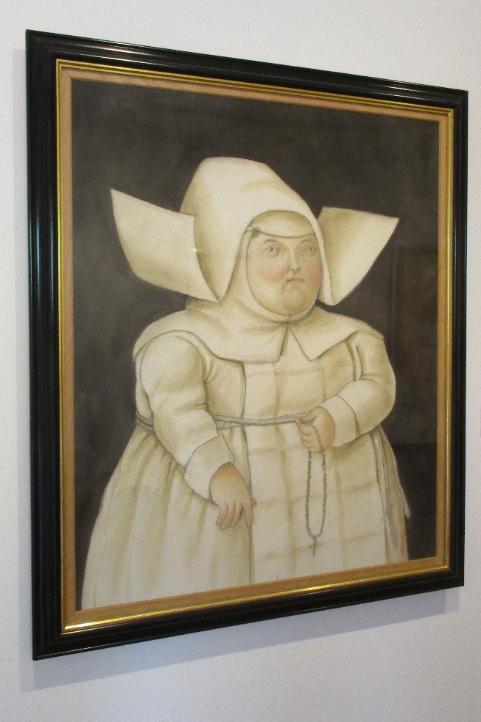
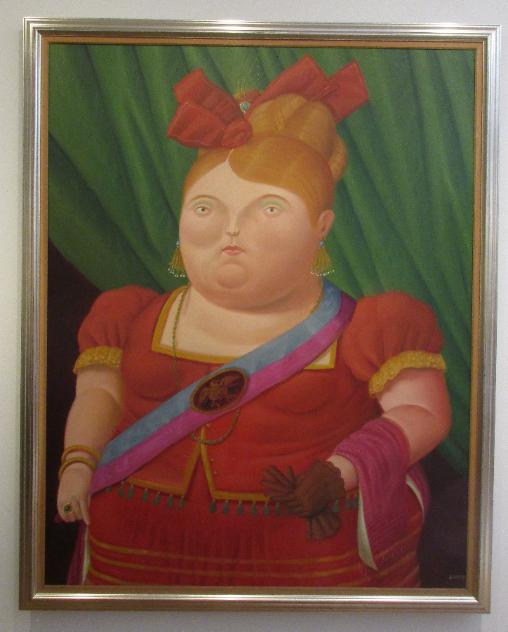
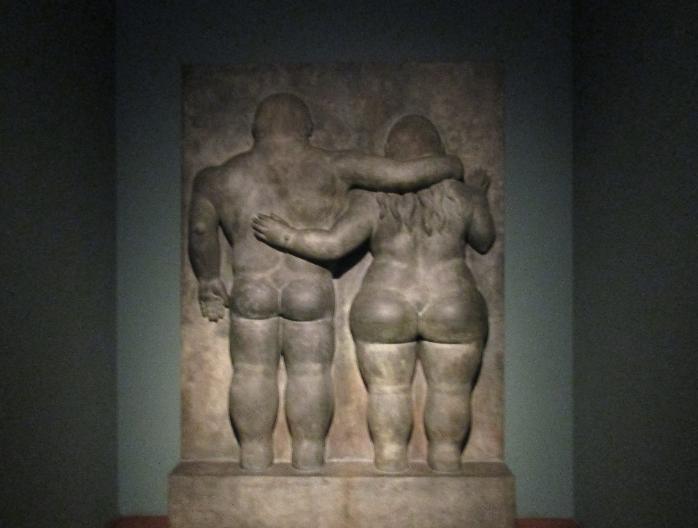
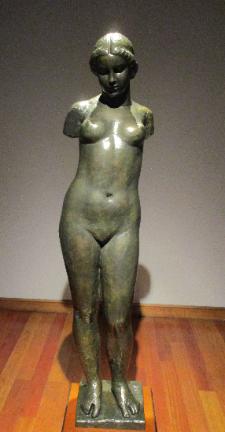
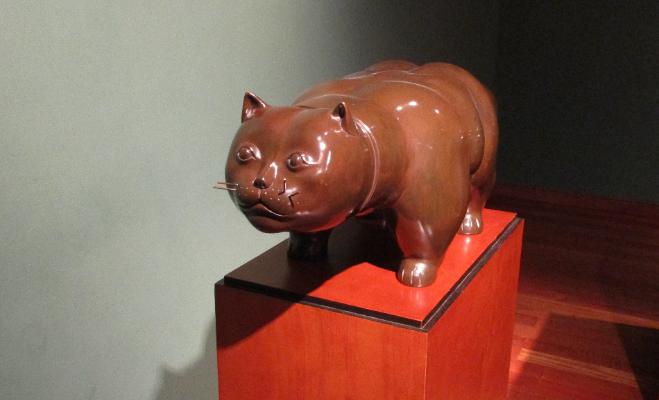
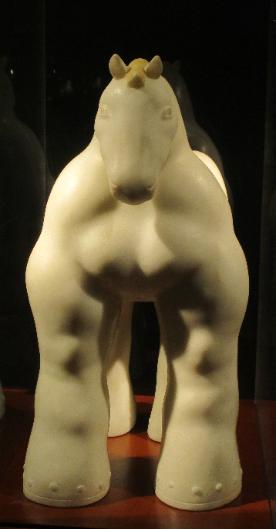
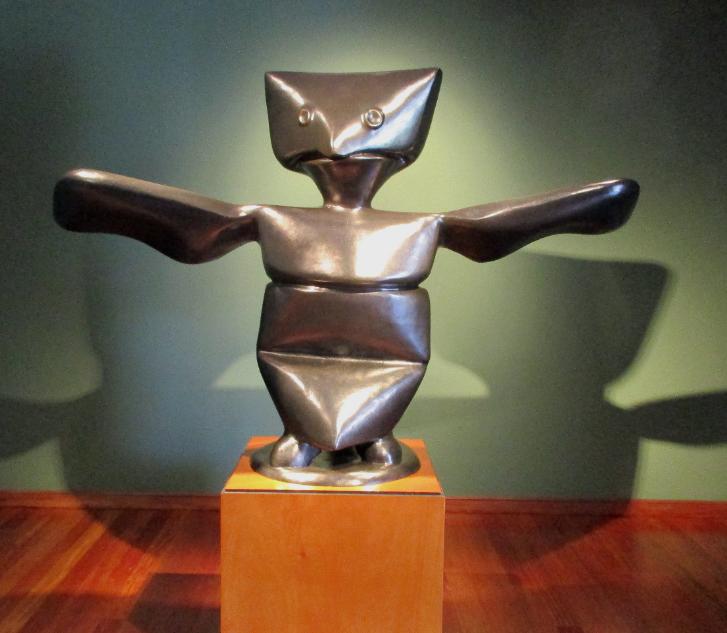
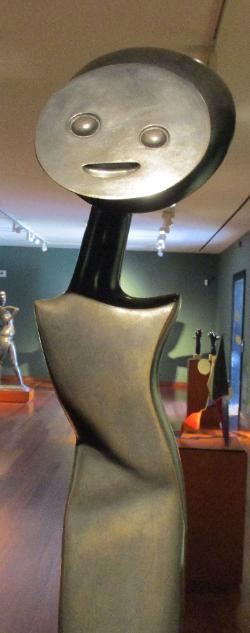
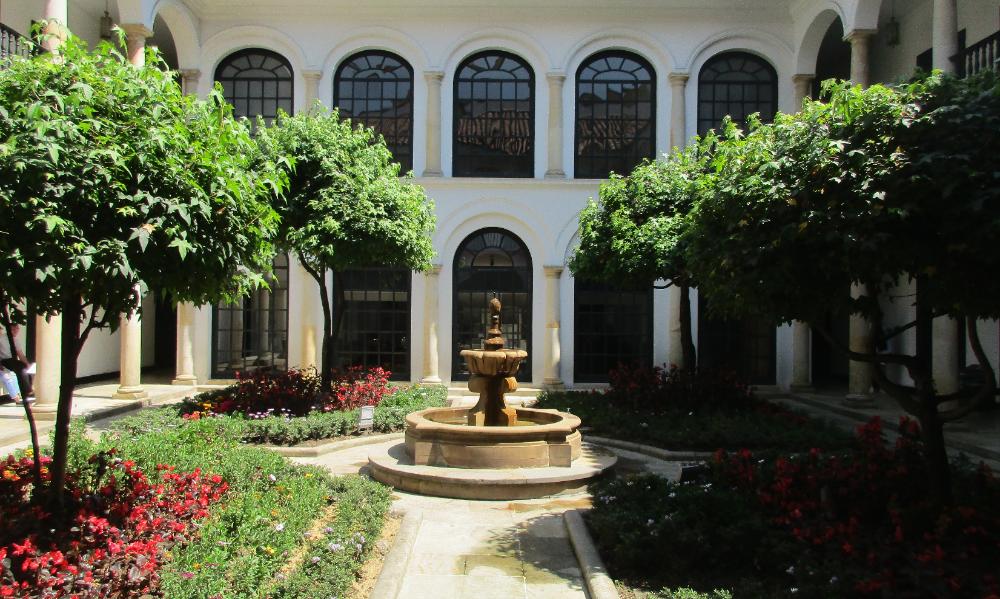
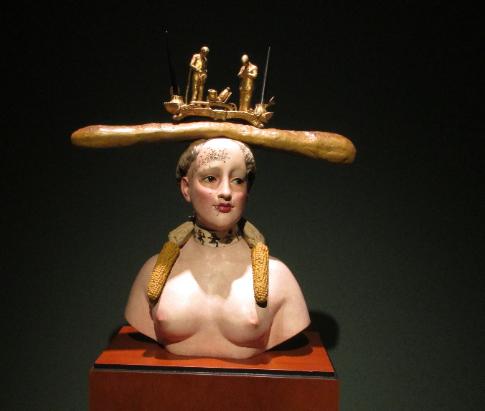
| The museum offers an appealing mix of Botero's scuptures and paintings |
